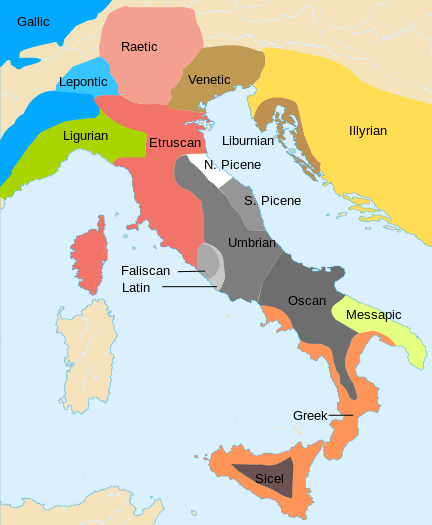| | The vocative case and imperative mood
The vocative case and the imperative mood, being different grammatical topics, are usually taught separately. Because, however, the vocative case and the imperative mood are so often used together I explain them together here.
1. The vocative case is used solely to identify a person or thing being addressed in a statement, e.g., "Paul, come with me" (Paule, veni mecum) or "Are you singing, Mary? (Cantasne, Maria?)".  . The interjection "O" is often used to further delineate the vocative but it is also often omitted. . The interjection "O" is often used to further delineate the vocative but it is also often omitted.
2. The vocative case is identical to the nominative case unless the name of the person or thing being addressed is a second declension, masculine, singular noun ending with "-us" in the nominative (e.g., Eduardus, Paulus, Dominus, Quintus) whereupon that "-us" ending changes to "-e" to form the vocative (e.g., Eduarde, Paule, Domine, Quinte).
3. A very few exceptions to this rule exist, notably: the nominative "Deus" remains "Deus" in the vocative and "Agnus" remains "Agnus"; "Jesus" becomes "Jesu"; "filius" becomes "fili"; "meus" can remain "meus" or become "mi".
4. The imperative mood is the verb form used to express commands. Do not assume that the imperative mood necessarily connotes harshness or authority. The English "Come in, take your coat off, and make yourself comfortable" demonstrates three 'friendly' verbs in the imperative mood. The imperative mood is often used to seek God's favor (Deus, salva nos!) or the saints' intercession (Maria, ora pro nobis peccatoribus).  . .
5. The imperative mood is used in two voices (active and passive) and in the present or (rarely) future tense. It is much more common the second person (both singular and plural) but it can appear in a third person sense. A very few verbs (e.g., posse) do not have an imperative form. A few imperatives (such as esse, ducere, and ire) are irregular.
6. The singular, active, present imperative (the most common form actually used in Latin or English) is easily found: simply drop the "-re" from the (active) infinitive form of the verb. Thus, "laudare" becomes "lauda", "monere" becomes "mone", and so on. For three verbs (dicere, ducere, facere) even the remaining stem vowel "e" is dropped resulting in "dic, duc, fac" as imperatives.
7. The plural, active, present imperative is also easily found: simply add "-te" to the singular imperative form, so "lauda" becomes "laudate", "mone" becomes "monete", and so on. In third conjugation verbs the singular imperative changes its stem vowel from "e" to "i" before adding the "-te", thus, e.g., "cape" becomes not 'capete' but rather "capite".
8. The singular, passive, present imperative is identical with the present, active infinitive form. To form the plural, passive, present imperative, simply take the plural active imperative, drop the "-te" and add "-mini".
|
![]() .
On pronouncing Latin consonants,
.
On pronouncing Latin consonants,
![]() .
.